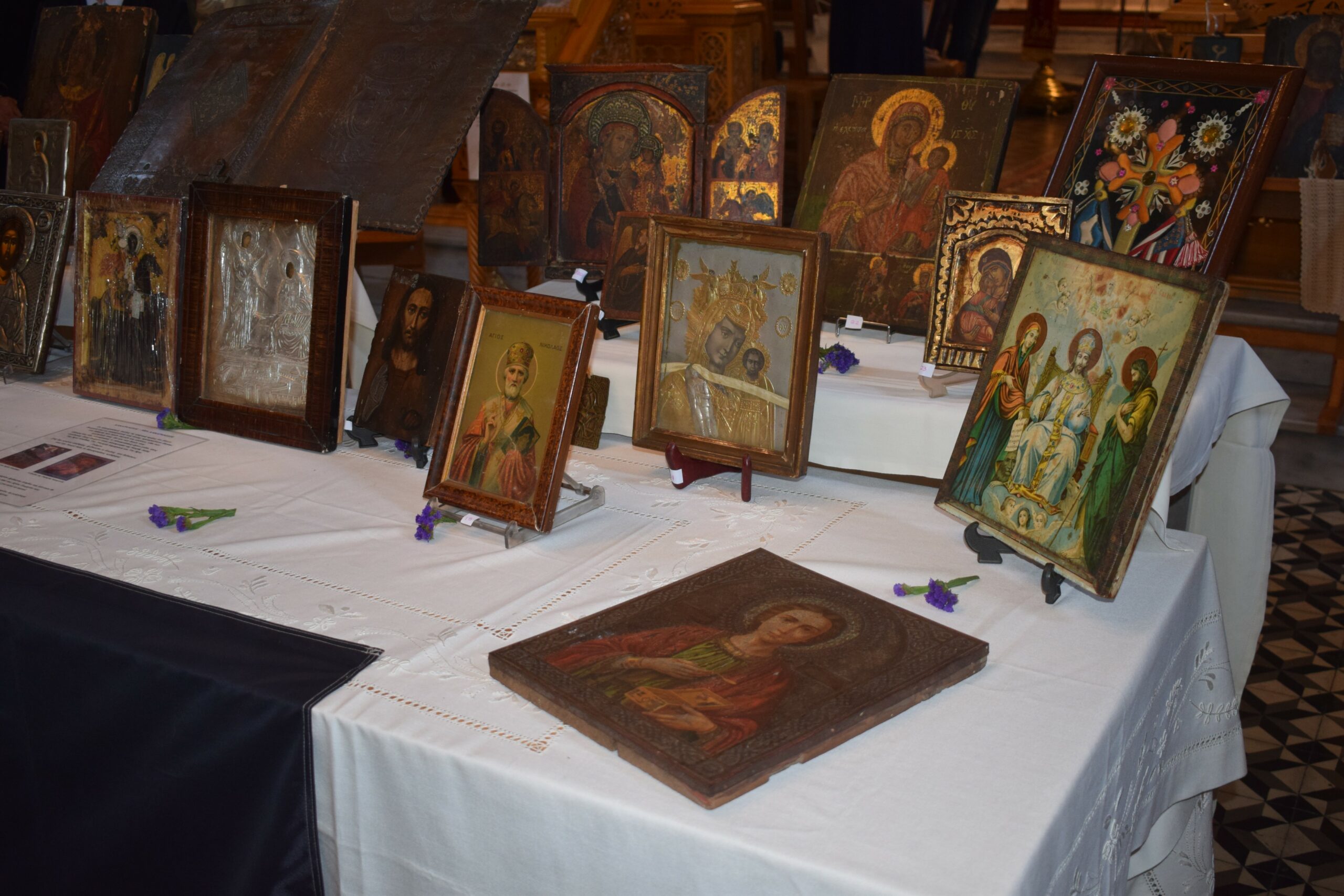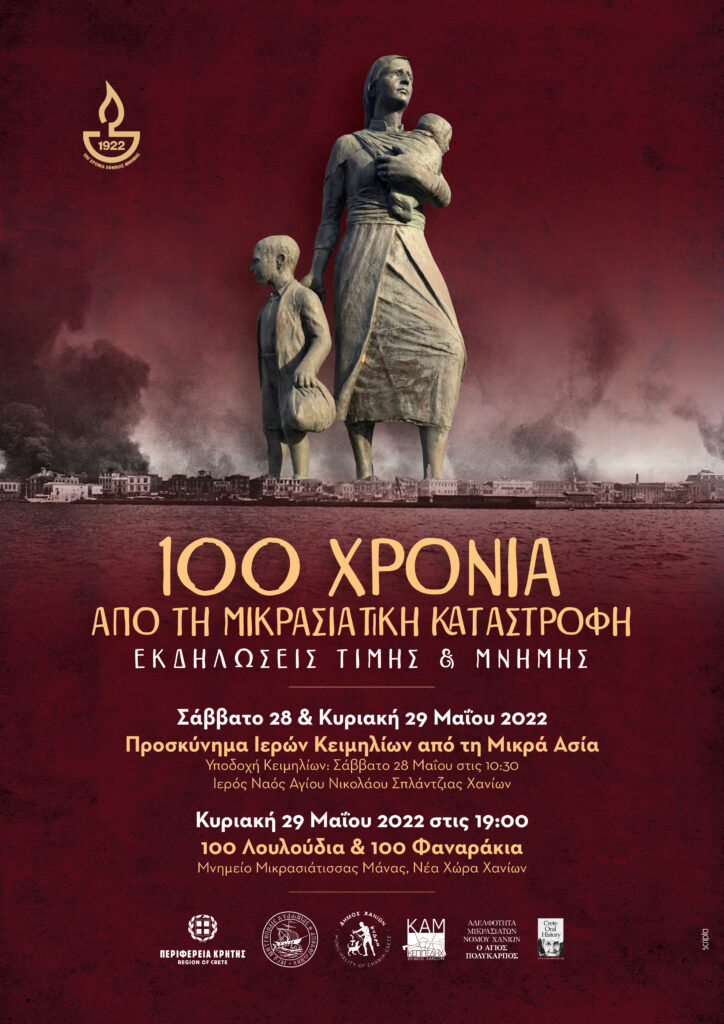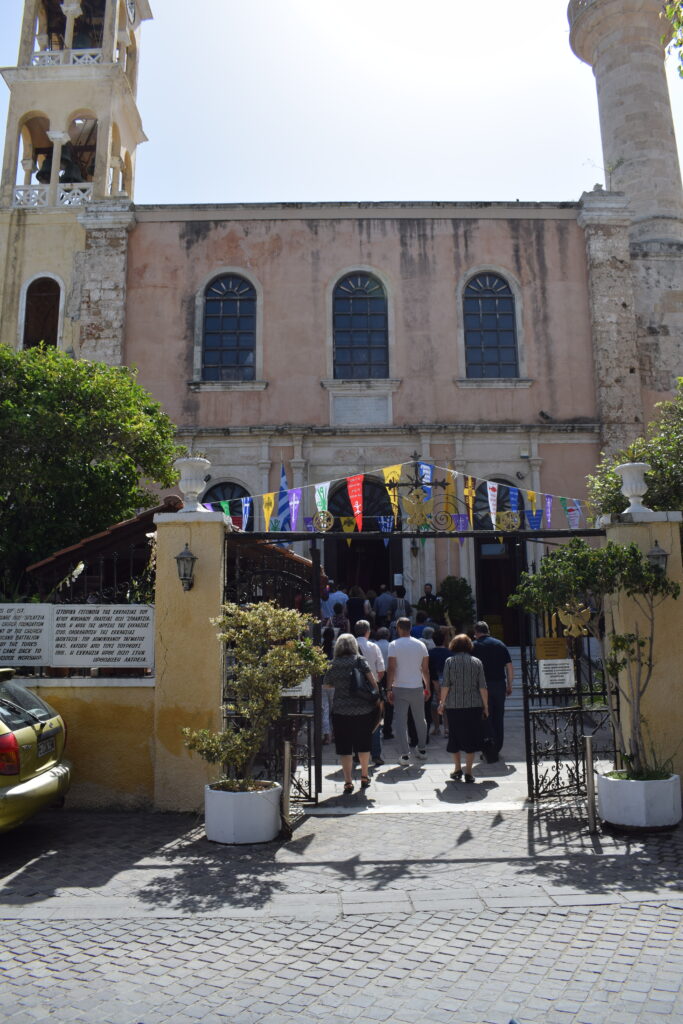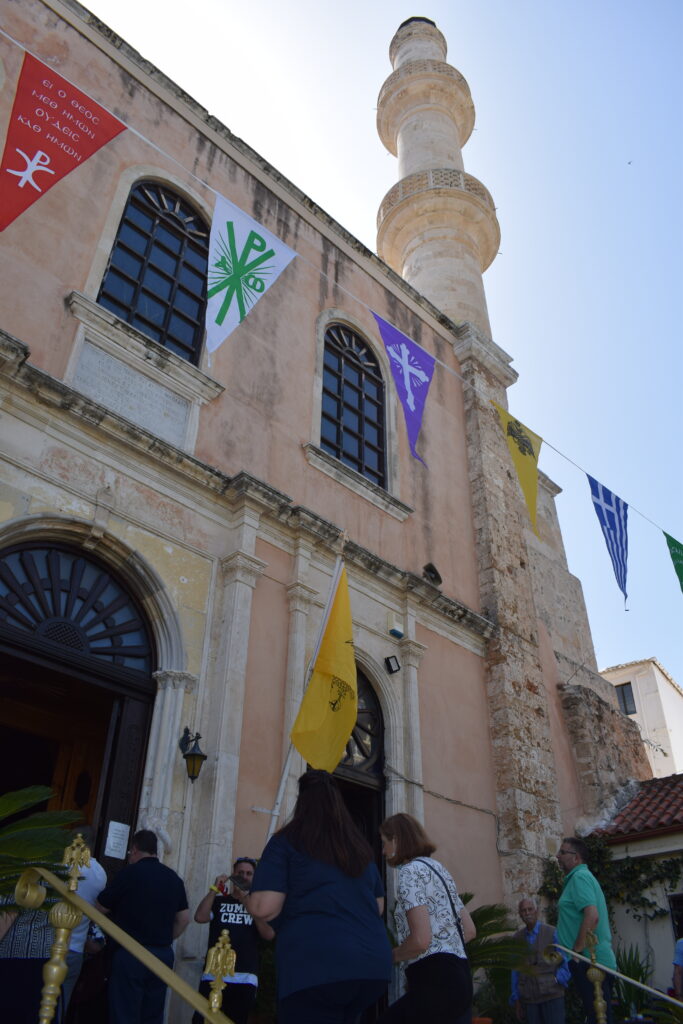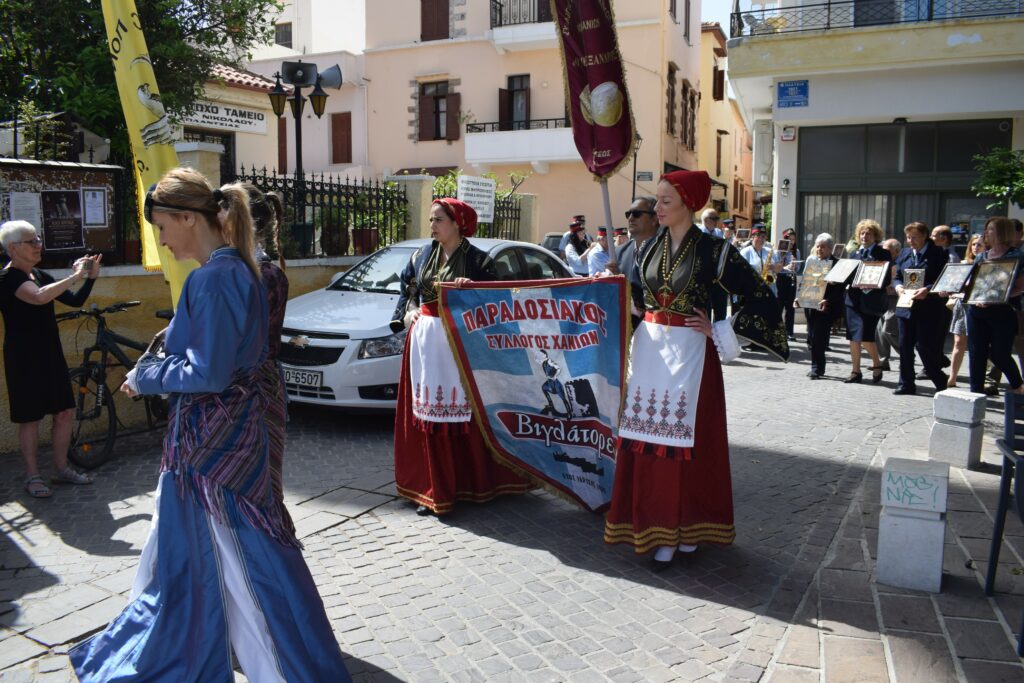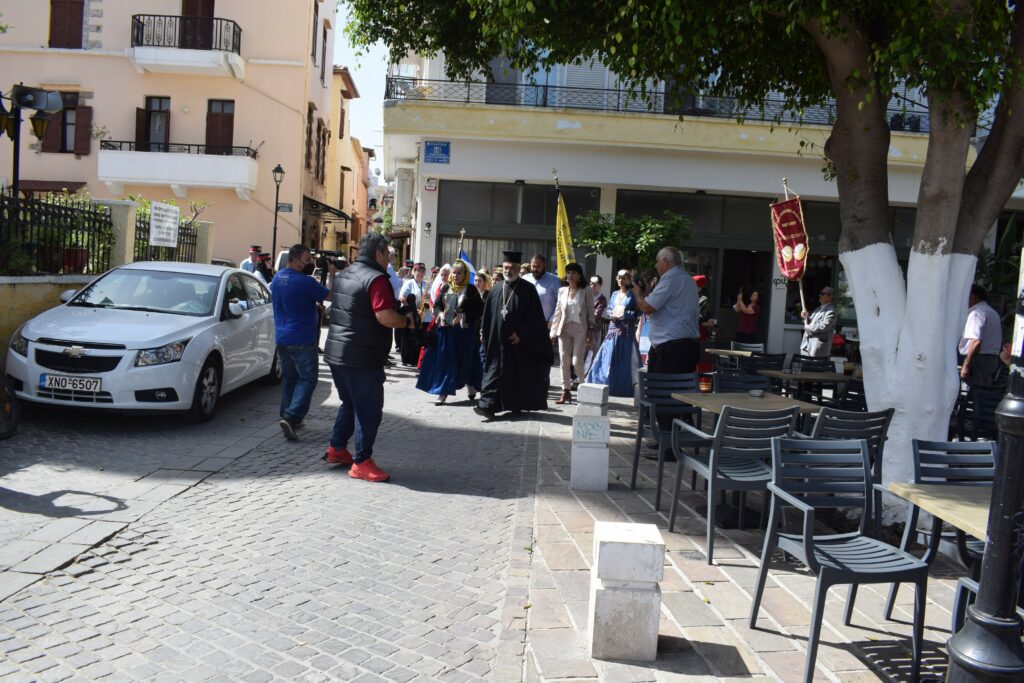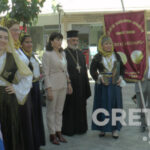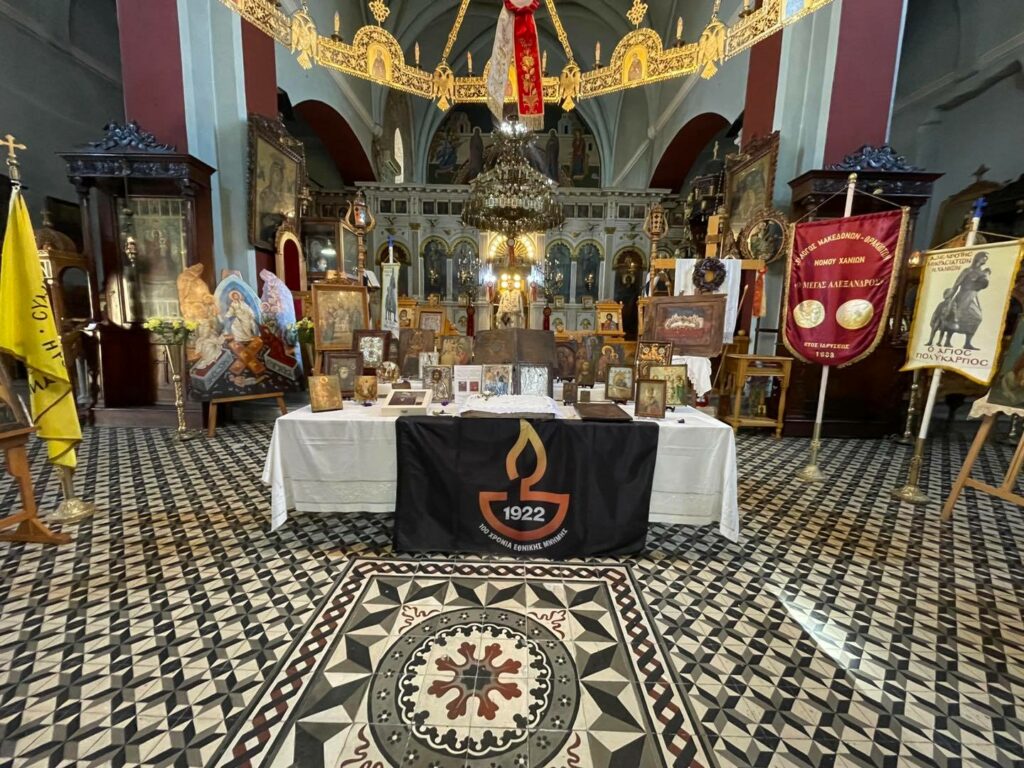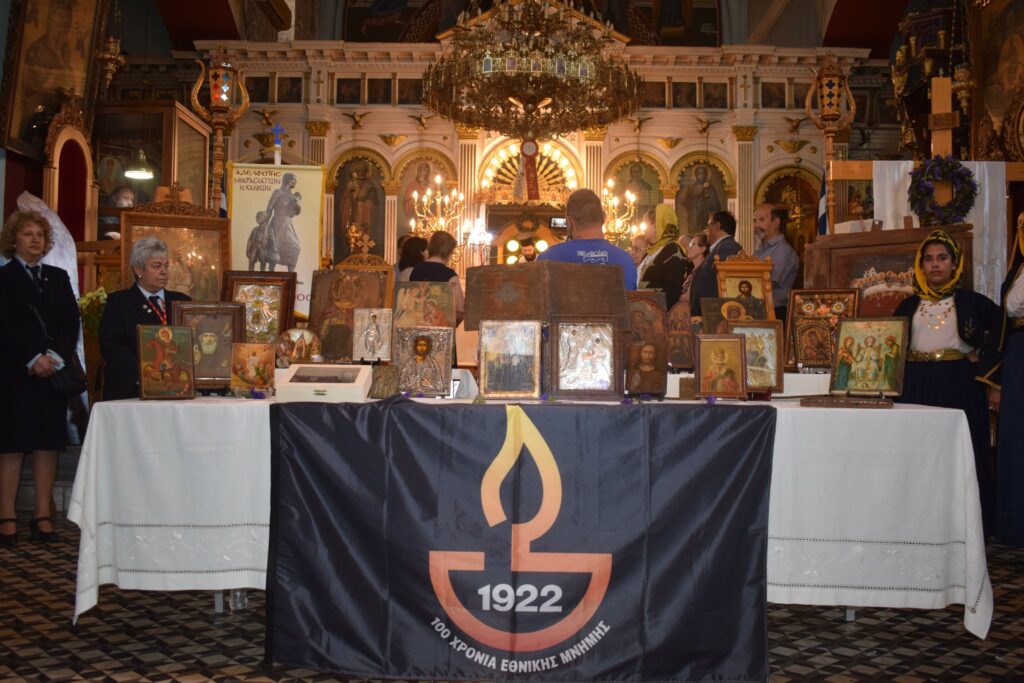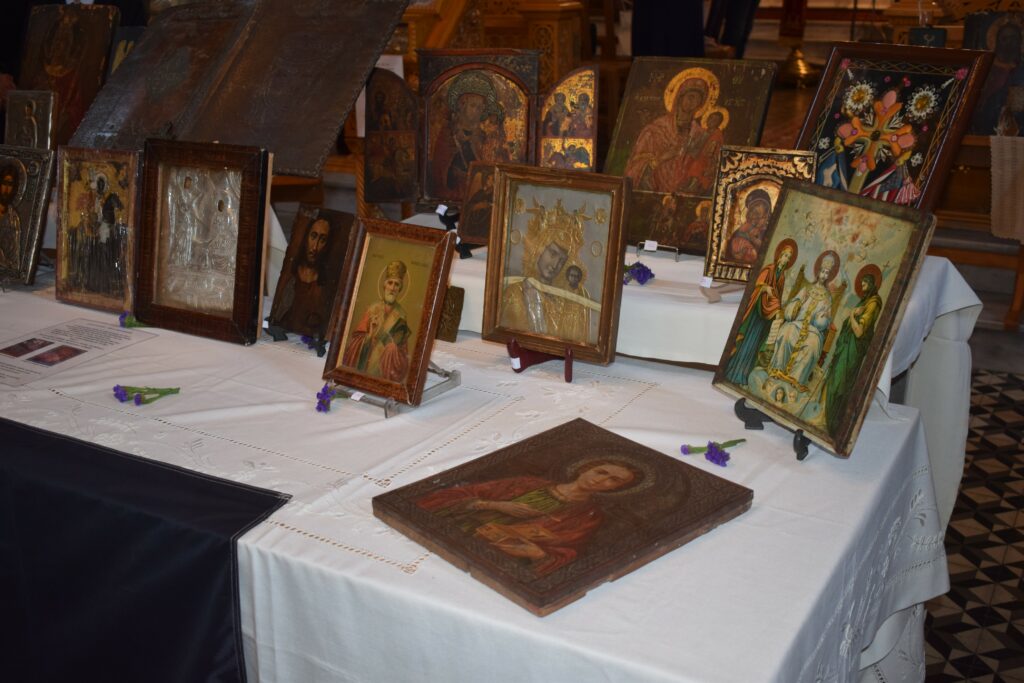On Saturday May 28, 2022, the ‘Agios Polykarpos’ Brotherhood of Asia Minor Greeks of Chania commemorated the centenary since the Asia Minor Catastrophe by organising a blessing of the icons that their refugee ancestors had brought with them from their homelands.
They chose the church of Agios Nikolaos due to its strong connection with the town’s refugee history. It was the main church of Splantzia, an area which received a large number of refugees since it offered easier access to housing, with the Muslim residents having already abandoned it and leaving their homes behind. The church itself is a product of successive population movements through the island of Crete. It was originally founded as a Catholic church by the Dominican monks who lived in Chania during the island’s Venetian period. After the town was captured by the Ottomans, the church was converted into the main mosque of Chania, Hünkâr Camii, and a two-balcony minaret was erected which still stands today. After the population exchange, it became a Christian Orthodox church dedicated to Agios Nikolaos and, in the 1950s, a belfry was added to the north side of the church. Today, the building constitutes a unique religious monument with a belfry and a minaret co-existing on the same site.
On the morning of the event, a small procession started from the entrance of Splantzia Square. Members of the Brotherhood, dressed in the traditional outfits of Asia Minor, were accompanied by similarly dressed members of other local associations: the ‘Megas Alexandros’ Association of Macedonians-Threcians, the ‘Romania’ Pontian Association, the ‘Viglatores’ Traditional Association, the ‘Arodamos’ Music and Dance Association. Across the street from the church, they were welcomed by the Philarmonic Orchestra of the Municipality of Chania. The descendants of Asia Minor refugees entered the church of Agios Nikolaos carrying the icons in their arms and attended a short service.
Around 30 icons were transported to the church for this ceremony. Some of them were in good condition, others were more fragile; some depict more obscure saints, others more recognizable ones; some have well-established origins, others remain a mystery.
